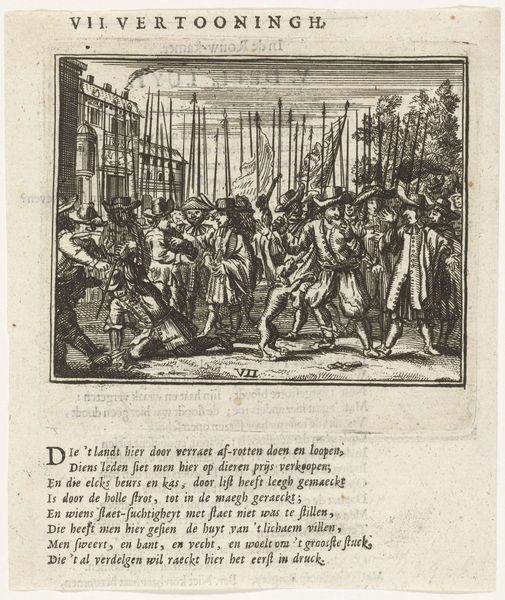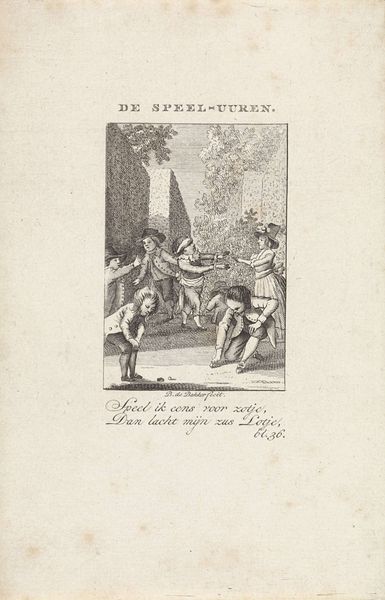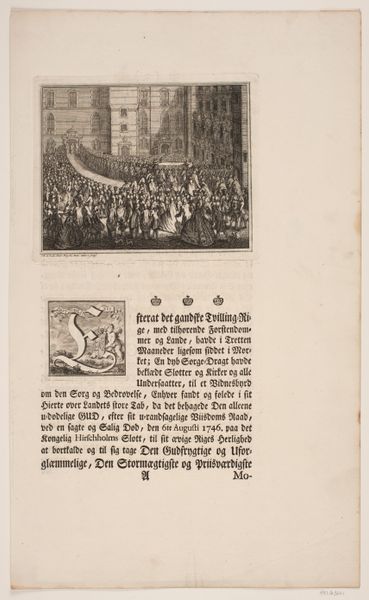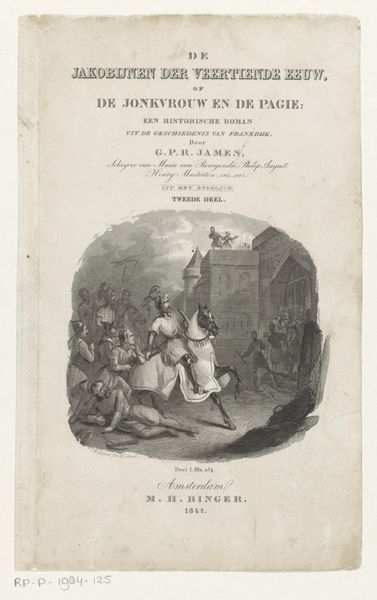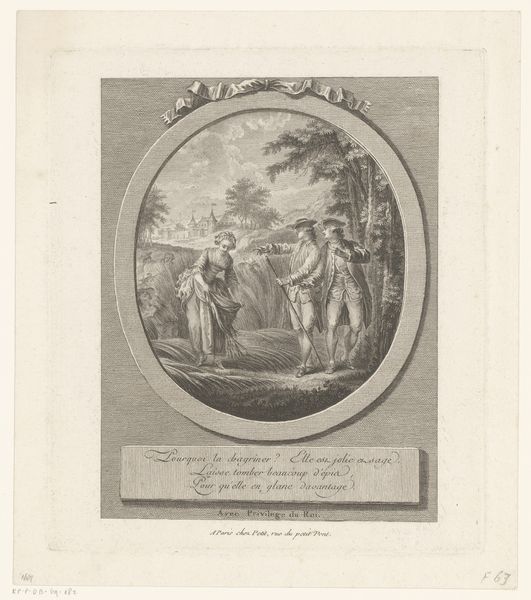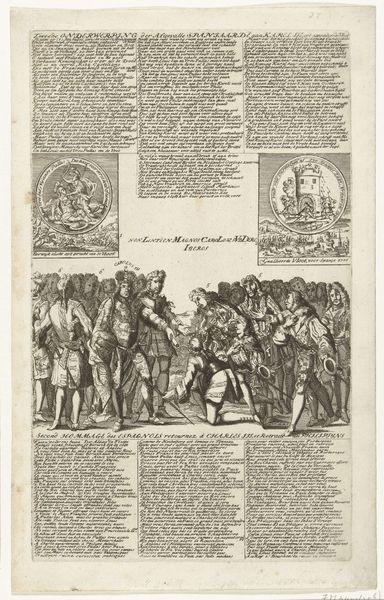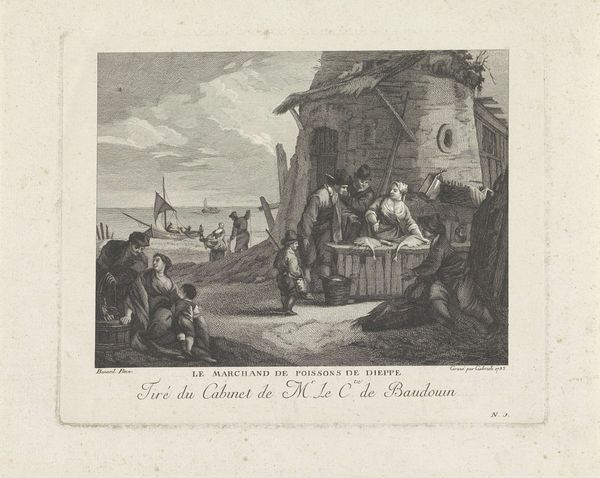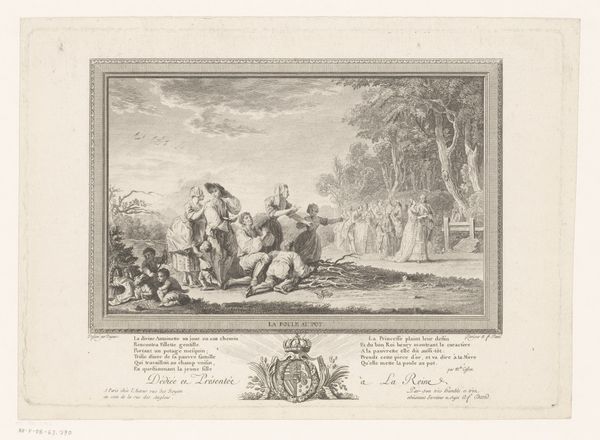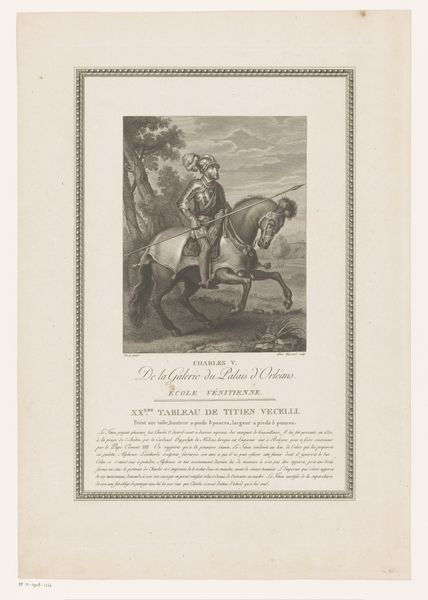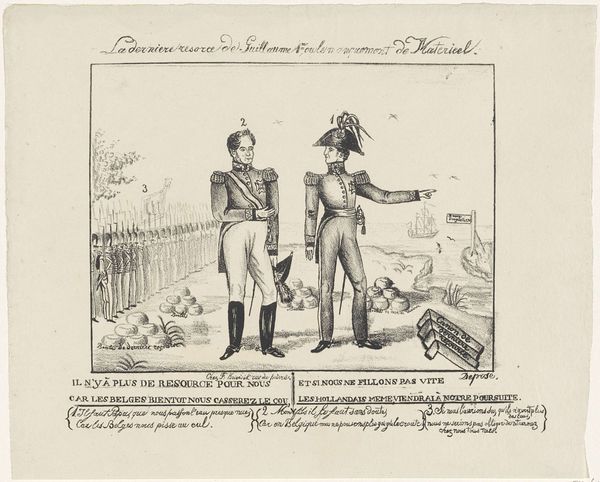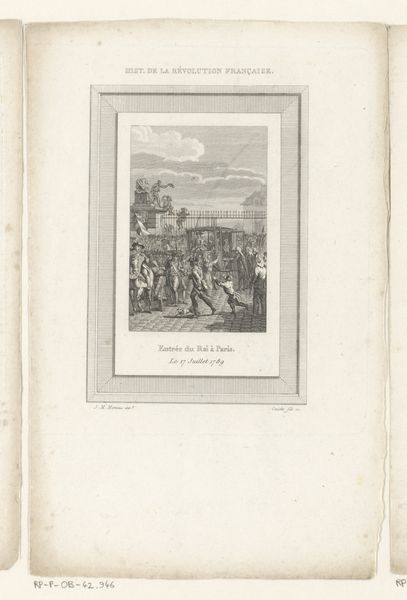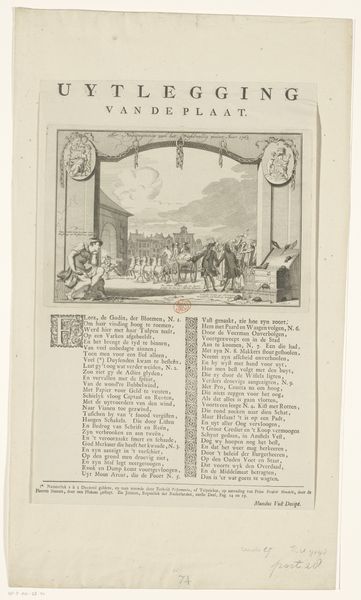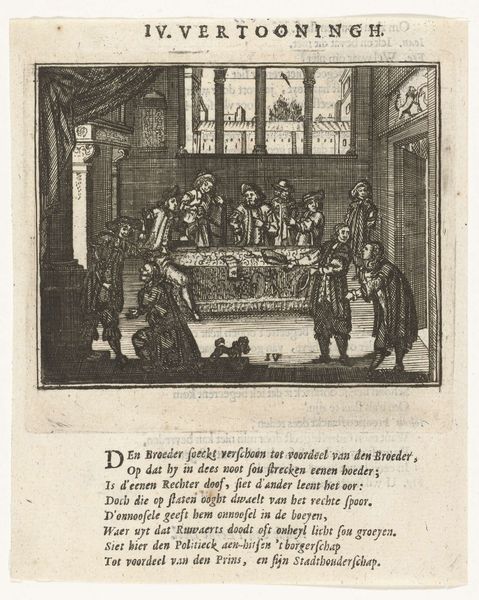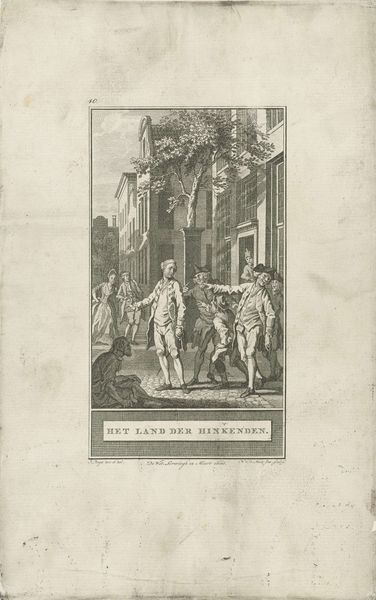
Dimensions: height 251 mm, width 192 mm
Copyright: Rijks Museum: Open Domain
Curator: Right, let’s immerse ourselves in this image, "Jan II van Bourbon tijdens de belegering van Metz," dating back to 1776, an engraving and etching printed on paper by Benoît Louis Prévost. Quite a mouthful, isn’t it? Editor: It’s striking. Somber, almost, even with the title's promise of a siege. It feels removed from the thick of things; observe, almost detached. And those shades of grey lend it a quality, distant, and dreamlike. Curator: I’d say it certainly fits the Neoclassical mood, striving to capture history with an almost theatrical sense of grandeur, yet neatly contained on a printed page. One sees the influence of Baroque though. What interests me is how Prévost balanced a commitment to detailed, accurate history and aesthetics in print form. How does this portrayal serve political aims and justify social structures of that time, though? Editor: Precisely. It is as you suggest, the representation and its effect on how the siege is viewed later is what seems more important than how it actually took place. It brings forth discussions of heroism and state power as performed, if that makes sense. This image makes the siege knowable. Who has control of its knowing is at play, for sure. And if you look more at what the figure of Jan represents at the center of it, the relationship with those surrounding, well it seems the image reinforces a strict order between all elements. The hierarchy is visible and in the interest of whoever would be consuming the image and the story around it. Curator: I agree with this order. It seems an orchestrated power-play. What's fascinating about revisiting these prints now, is unpicking those layers. Looking beyond the immediate depiction to the intricate web of cultural and political threads woven in. It almost begs to be seen under a critical lens now. What do you think its legacy is, knowing this all this? Editor: It is like any tool to disseminate ideals; and how those with resources or some form of capital create art, whether paintings or prints, that promote their visions of society. The images stay; in the same way language becomes sedimented in our everyday speech. The artwork then just becomes another brick in the wall to cement ideas of its time and what or whom they serve. That being said, this knowledge should inform viewers; if you allow, you can reimagine it and take your own meanings of that time, and even deconstruct it to see the present day in contrast with its context.
Comments
No comments
Be the first to comment and join the conversation on the ultimate creative platform.
